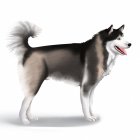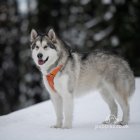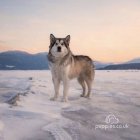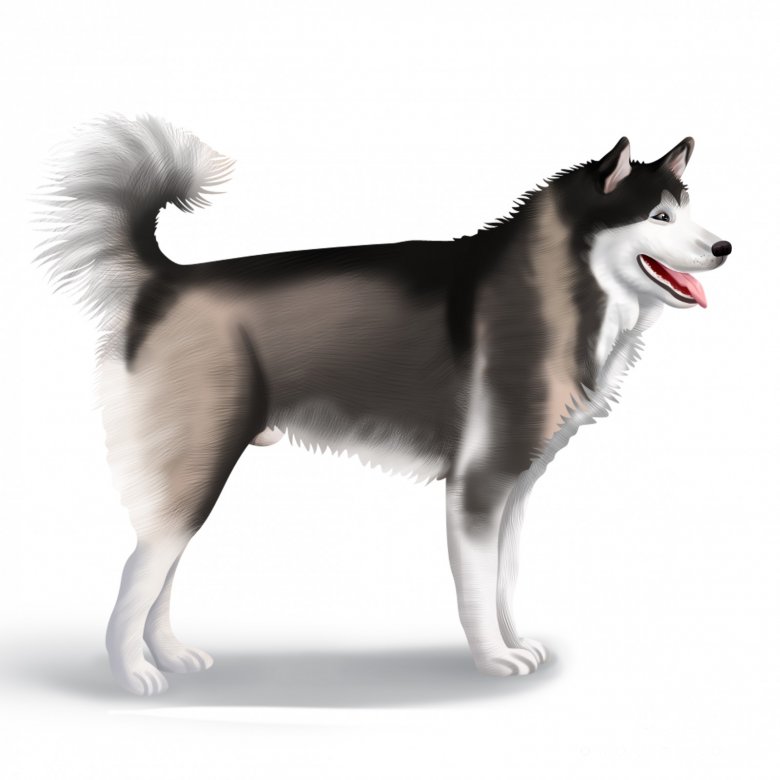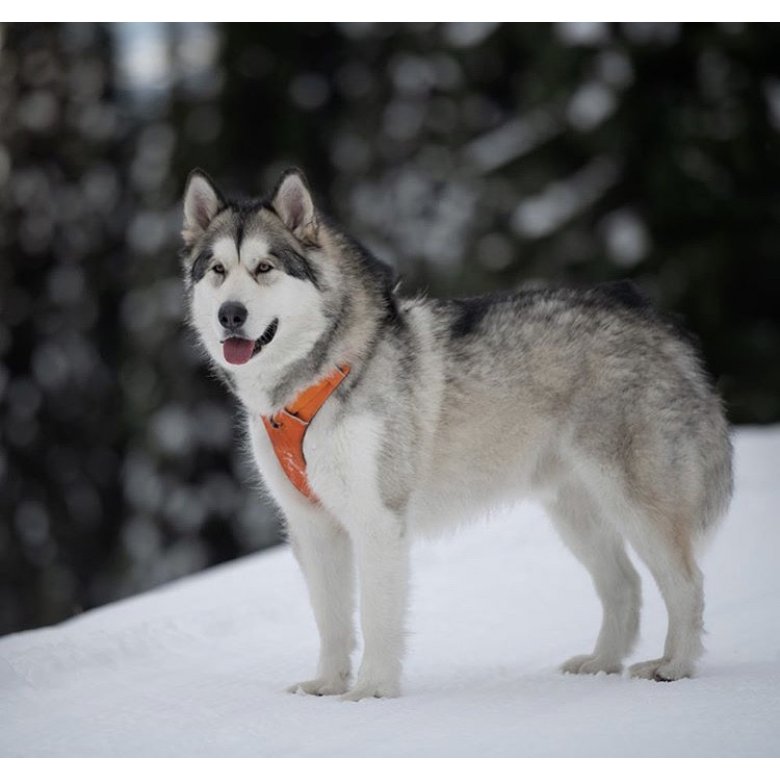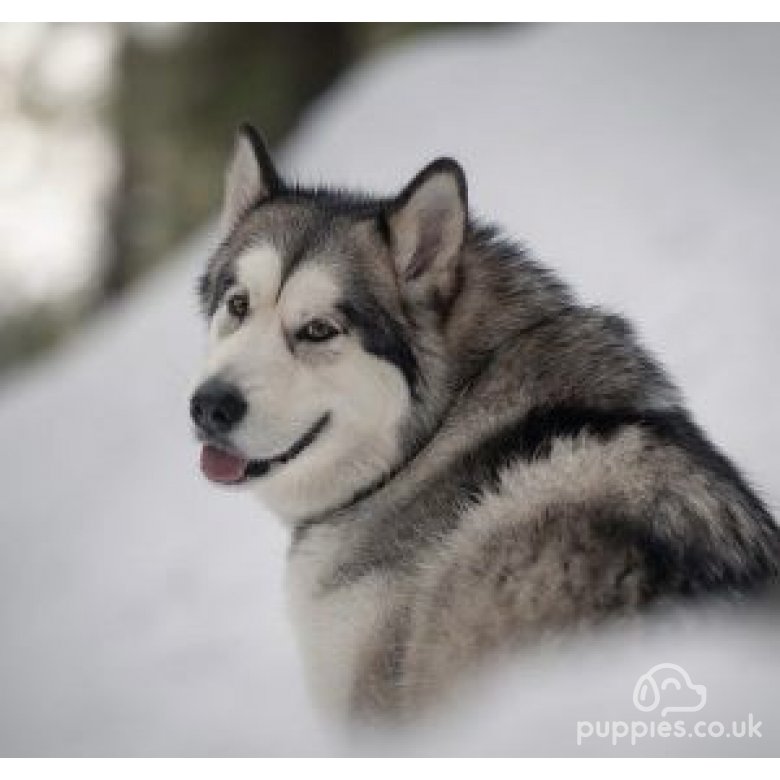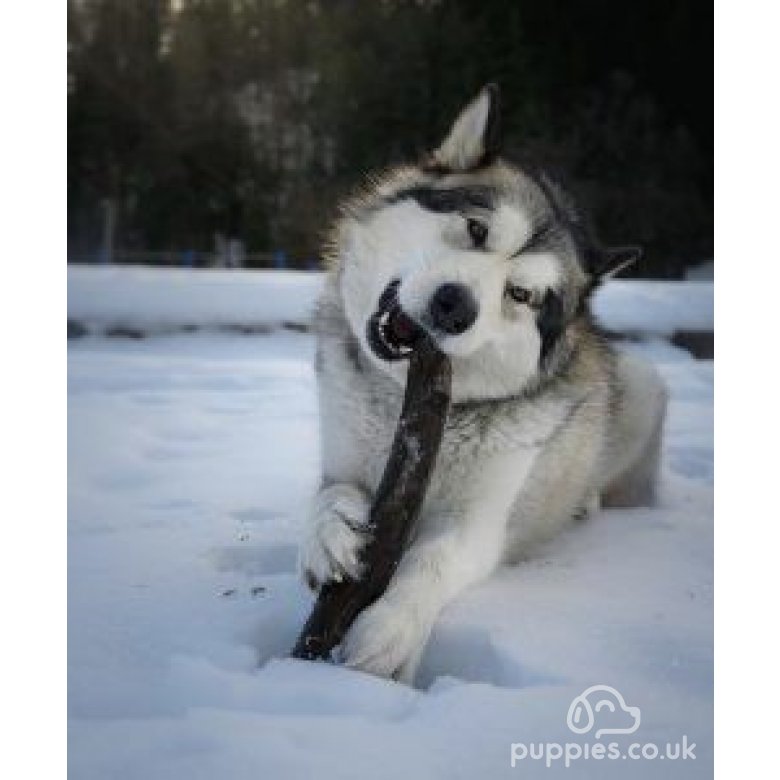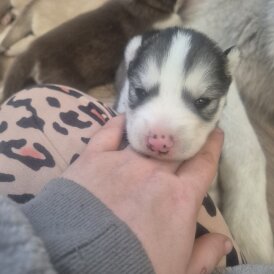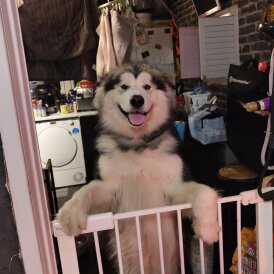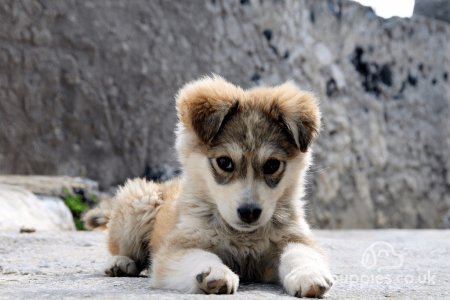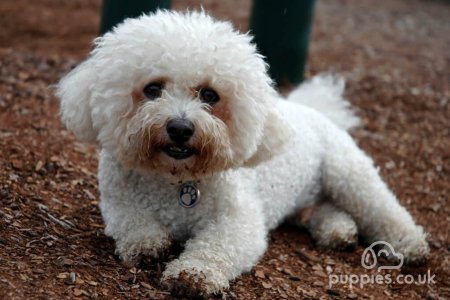The wild and free state of Alaska is known for its frigid winters and rugged natural landscapes. Wildlife seems to flourish in size, from the famed Alaskan king crab to the wild salmon to the immense grizzly bear. The Alaskan Malamute embodies the beauty of Alaska with its unique looks and superb ability to withstand the cold tundra and forests of the Arctic, but they’ve caught the attention of breeders and owners around the world in recent years as well. The Alaskan Malamute is amongst the largest breeds of spitz, both in size and in temperament. They’re a rugged, working breed by nature, which may make them difficult to train. As puppies, however, they’re incredibly cute and photogenic but also loyal and loving companions. There are many great reasons to purchase an Alaskan Malamute puppy, but buyers should be aware of their requirements before purchasing or adopting one for themselves.
Why Alaskan Malamutes are Great
Some highlights of Alaskan Malamutes:
Intelligent: this breed is intelligent and can be trained to carry out many tasks and to obey many commands.
Child-friendly: this breed is known to get along well with children of all ages.
Playful: Alaskan Malamutes love to play as puppies and excel at canine sports.
Active: this breed thrives on being outdoors running and playing.
Strength: Alaskan Malamutes were bred to carry sledges in the tough Arctic climate and therefore they make excellent, strong working dogs.
Things to Consider when Looking at Alaskan Malamutes for Sale
Some downsides to the Alaskan Malamute:
Shedding: this breed is known to shed profusely and will leave hair all around the house.
Stubbornness: as an independent breed, Alaskan Malamutes can show signs of stubbornness from time to time.
Costly: this breed has become popular in recent years outside of America and may command high prices to purchase and to maintain.
First-time owners: this breed can be challenging for first-time owners and is not the best choice due to their high maintenance requirements.
History of the Alaskan Malamute
The Mahlemut people, Eskimos living in the Arctic Circle made use of the Alaskan Malamute’s ancestors for perhaps tens of thousands of years as all-purpose working dogs. These ancient dogs were excellent at pulling sledges for these nomadic tribes across the snowy terrain of Alaska and the Arctic. Furthermore, they assisted the Mahlemut hunting expeditions by detecting seal holes and alerting owners to their location. This breed became famous during the 1896 Klondike Gold Rush, during which period they were prized for their sturdy, hardworking abilities such as pulling sledges for prospectors and miners. This proud heritage was honoured by Alaska in 2010 when the state named the Alaskan Malamute as the official state dog. The breed declined significantly to the point of near-extinction during the Second World War but has since rebounded in numbers and is now a popular breed worldwide.
Appearance
Alaskan Malamutes have a unique appearance that only resembles a few related breeds such as the Husky. Malamutes are larger and more powerful than Huskies and other spitz breeds. They are muscular, big-boned, and stand tall and proud. This breed has a distinctive double coat of fur that is designed to protect it from the cold Arctic temperatures. The overcoat is coarse and protects a dense, woolly undercoat. Even the insides of their upward-pointing ears are lined with fur to allow them to sleep outdoors in the extreme cold. Their tails are bushy and distinctive of their breed type.
How big is the Alaskan Malamute?
Alaskan Malamutes are large-sized dogs. Males grow on average to 64-71 cm in height, whilst females can grow up to 58-66 cm high.
How heavy is an Alaskan Malamute?
Fully-grown adult male and female Alaskan Malamutes weigh between 38-56 kg on average.
What colour is the Alaskan Malamute?
This breed has the following commonly-accepted coat colours:
Light Grey;
Black;
Sable;
Red.
Shades from Light Grey to Black are acceptable, as are shades ranging from Sable to Red. The only permissible solid colour is White, and white markings are common on all colour variations.
Temperament
Owing to its Arctic roots, the Alaskan Malamute is a resourceful, intelligent, and highly independent breed fully capable of hauling and carting tremendous weights (up to 1,500 kg) across vast distances in the snow. Today, many are used as family pets and they excel at socialising with owners and their families as well as children of all ages. This breed does have a strong prey drive which will lead it to chase anything that moves. He can also be stubborn at times and therefore requires firm yet gentle training for obedience and to reduce bad habits from developing when they’re puppies. For these reasons, it may not be the best choice for first-time puppy owners.
Do Alaskan Malamutes make good guard dogs?
Despite their large, imposing size, Alaskan Malamutes do not make good guard dogs or watchdogs since they seldom bark and don’t show aggression.
Do Alaskan Malamutes bark a lot?
This breed does not bark much at all. They are a very quiet breed that will only let out a small howl rather than a loud bark most of the time.
Are Alaskan Malamutes easy to train?
This breed can be trained with persistence and patience. They respond best to training as puppies and should be taught obedience. They can show signs of stubbornness at times, but this may be reduced through proper training.
Are Alaskan Malamutes playful?
As puppies, Alaskan Malamutes are playful and cute. As they grow older, they tend to become more serious.
Are Alaskan Malamutes good with children?
This breed is known for being sociable and gentle with children of all ages.
Are Alaskan Malamutes good with other pets?
Alaskan Malamutes don’t tend to get along well with other pets. They often attempt to exert dominance over other dogs and also suffer from a high prey drive that will lead them to chase cats and small pets around the home.
Can I leave an Alaskan Malamute alone?
Although Alaskan Malamutes are known for being independent, they should not be left alone for too long if they’re living in a home rather than the tundra of Alaska. Don’t neglect them, especially as puppies.
Do Alaskan Malamutes like water?
This breed generally does not like water and will not enjoy swimming.
Health
How long do Alaskan Malamutes live?
Generally, Alaskan Malamutes are expected to live anywhere from 10-12 years.
How much exercise does an Alaskan Malamute need?
This breed has demanding exercise needs that need to be met to keep them mentally and physically stimulated. Spend no less than two hours per day taking them outdoors for walks and to play, but always maintain supervision in parks or areas where other dogs roam off the lead.
What are an Alaskan Malamute’s common health issues?
Alaskan Malamutes are generally healthy, but they may suffer from a few common health issues including:
Care
How much space do I need for an Alaskan Malamute?
As a large breed accustomed to the great outdoors, Alaskan Malamutes need to live in a large, rural home and will not tolerate living in small, confined spaces such as apartments.
What should I feed my Alaskan Malamute?
A fully-grown Alaskan Malamute should be fed 4 to 5 cups of high-quality dog food every day, divided into two meals. Adjust as necessary to promote good health and to prevent overfeeding.
How much grooming do Alaskan Malamutes need?
Since Alaskan Malamutes have such dense coats of fur designed to protect them from the extreme cold, they tend to require frequent grooming by professional groomers. Their high grooming requirements are an important consideration for any prospective owner.
Do Alaskan Malamutes shed?
This breed is known to shed a lot of hair, particularly in Spring and Autumn. Frequent household cleaning will be necessary to keep carpets and furniture clean.
Average Costs
How much does it cost to keep an Alaskan Malamute?
As a rough guide in pricing: Cost to buy: roughly £250-800 for a well-bred Alaskan Malamute puppy Other costs (Vet, Food etc): £80-120 per month
Specific Buying Guide
You can read our general buying guide here, with the most important thing being going to view your Alaskan Malamute puppy, seeing it with its mother, and checking the quality of the breeder. More specifically, here is some Alaskan Malamute puppy buying advice:
Alaskan Malamute puppies are very cute and adorable, but they will grow quickly and take up a lot of space. Only purchase an Alaskan Malamute puppy if you are able to provide it with a large home in the country and are willing to put in the effort required to train him properly.
This breed’s most common health issues are hip dysplasia and cataracts. Although these are common to many breeds, they should be the first considerations for anyone looking to purchase a puppy since veterinarians may be able to detect these problems and address them from an early stage.
Other Reading, Adopting Alaskan Malamute Puppies and Rescue Organisations
A big thank you to the following sources who helped to shape this article: Saints Sled Dog Rescue: https://www.saintssleddogrescue.co.uk/ Siberian Husky & Malamute Dog Rescue: https://sibesandsleddogs.org.uk/ Kennel Club of Great Britain: https://www.thekennelclub.org.uk/services/public/breed/display.aspx?id=5105 UK Dog Trust: https://www.dogstrust.org.uk/ Blue Cross: https://www.bluecross.org.uk/rehome-pet Federation Cynologique Internationale: https://www.fci.be/Nomenclature/Standards/243g05-en.pdf






